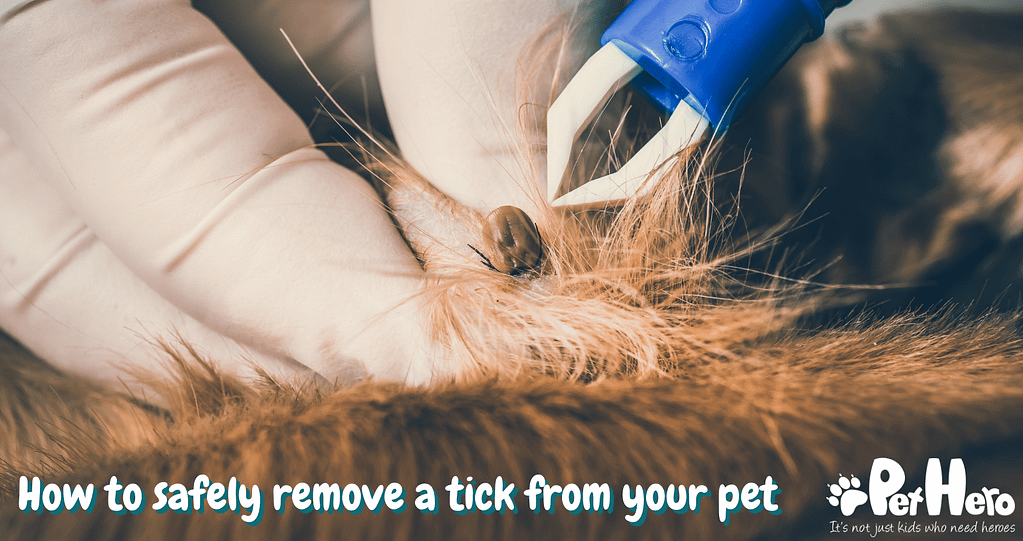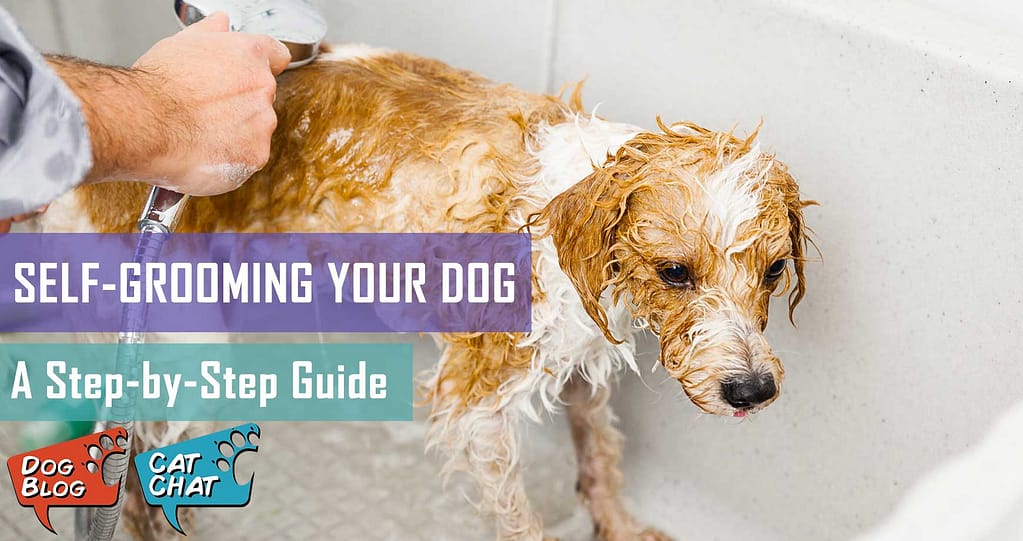One of the joys of sharing your life with a furry friend is being able to cuddle, pet and groom them. It’s good for them and it’s good for you – with benefits like reducing your stress and lowering your blood pressure. Needless to say, if you find a tick enjoying a blood meal courtesy of your beloved pet, it can have the exact opposite effect and cause a little more anxiety than desired!
Fortunately, finding a tick on your pet is not cause for an immediate state of emergency. There are a few ways to safely and easily remove ticks from your pets. Some of these methods require nothing more than your finger, while others take nifty tools especially made for this cringe-worthy task. Have a look.
Note: Wear latex gloves if this will make you feel more comfortable and prepared.
Twirly-whirly tick removal
This is the easiest way to safely and painlessly remove a tick from your pet, especially if you don’t have any tweezers or tick removal tools on hand. It also works the easiest on a tick that is already engorged – those really big, gross ones. This method requires that your pet be relaxed and lie still, and that they don’t mind their hair being played with because that’s what it’s going to feel like to them.
Step 1: Locate the tick and part your pet’s hair around the tick.
Step 2: Place your finger on top of the tick, touching it (yes, eww!), and then make little circles with your finger – clockwise or anti-clockwise, it doesn’t matter. It will take approximately 30 – 60 seconds of ‘wiggling’ the tick with this circular motion before it lets go and falls off your pet.
Step 3: Have a piece of tape or a baggie handy with which to trap the loose tick and dispose of it.
Note: The purpose of this method is not to twist the tick off your pet, but merely to annoy it until it lets go. The more engorged and ‘lazy’ the tick is, the faster it will let go, so just be patient.
Quick and simple removal with tweezers
The fastest way to remove a tick from your pet is with a pair of sterilised tweezers.
Step 1: Locate the tick and part your pet’s hair around the tick.
Step 2: Using the tweezers, grab the tick as close to your pet’s skin as possible. The tick’s mouthparts will be buried in your pet’s skin – you want to grasp it with the tweezers just above the mouthparts.
Step 3: Apply steady pressure and pull the tick straight up. Don’t rip at the tick or hesitate with the pressure for fear of hurting your pet. Also, don’t squeeze so tightly that the tick ruptures or bits break off. Just maintain a steady pull with the intention that it will come out eventually… and it will. To your pet, it just feels like a splinter coming out.
Step 4: Have a piece of tape or a baggie handy with which to trap the loose tick and dispose of it.
Quick and simple removal with a tick picker
A tick picker is a specially designed grooming tool that makes tick removal quick and simple… without you needing to sacrifice the bathroom tweezers for your pet’s safety. We have two tick remover tools here and here, which can be very handy to keep with your pet’s grooming equipment for when you find ticks on them. This is how you use a tick removal tool:
Step 1: Locate the tick and part your pet’s hair around the tick.
Step 2: Place the wide part of the tool over the tick and draw the tool over your pet’s skin until the narrow part of the tool ‘grips’ the tick.
Step 3: Gently lift the tick picker up and away from your pet’s skin. The tick, which is already gripped in the tool, will be pulled out away from your pet – the pressure from the pulling forcing it to let go.
Step 4: Have a piece of tape or a baggie handy with which to trap the loose tick and dispose of it.
Don’t forget to disinfect the bite mark
After each removal, disinfect the bite mark on your pet’s skin with an antiseptic cleaner or wipes, and keep an eye on the area for a few days after you’ve removed the tick. If you see any signs of infection or if your pet is not well, take them to the vet immediately to rule out or treat any tick-borne diseases.
Prevention is better than cure
The best way to safely and easily remove a tick from your pet is to prevent them from approaching you pet to begin with or to kill them on contact! There are several ways to keep your pet safe from ticks:
Chemical or electronic tick repellent
A tick and flea shampoo can proactively repel ticks, while a powder can be sprinkled on your pet and combed through their coat as well as sprinkled on their beds and blankets to prevent repeat infestations. Tick and flea spray is also useful in-between baths, to keep ticks at bay.
If you are concerned about chemicals then why not try an ultrasonic tick and flea repellent? This can be worn on your pet’s collar and it deters parasites by emitting an ultrasonic frequency at a range of 1,5 metres. This will keep pests away, but it won’t treat an existing infestation, which must first be eliminated.
Tick and flea treatment: Chews
There are many different tick and flea-killing chews on the market, designed to protect pets against ticks and fleas for months at a time. These work by chemically infiltrating your pet’s skin so that if they are bitten by ticks and fleas, the parasites will die immediately, having been poisoned by the bite.
Spot-on tick and flea treatment
Spot-on tick and flea treatments are applied topically to your pet, by dotting the liquid on the back of your pet’s neck. From there, it is spread through the skin so that if a tick or flea bites your pet’s skin, the parasite will die.
Tick and flea collars
Tick and flea collars work in a similar fashion to spot-on treatments, in that the active ingredients in the collar need to make contact with your pet’s skin to repel ticks and fleas.
Your pet is a warm-blooded fuzzy creature, so ticks and fleas and other parasites will be an inevitable part of their lives. Keep them safe by choosing the right prevention or repellent treatment that suits your pet and your pocket.







